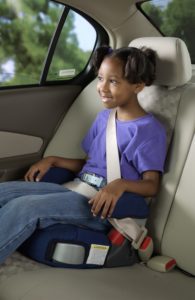Rear-facing safety seats still best protection for youngest passengers

COLLEGE STATION – Using rear-facing safety seats for small children in vehicles is still the “best and safest” practice for parents and other caregivers, according to a Texas A&M AgriLife Extension Service program manager based in College Station.
Bev Kellner said although a new rear-facing law passed by this year’s state legislature was vetoed, the best way to protect young children in vehicles remains keeping them in a rear-facing safety seat for as long as the child is within the weight and height limit of the seat.
“Although Texas does not yet have a law to keep children rear-facing, the facts support the use of properly installed rear-facing safety seats as the best way to provide protection for young children riding in motor vehicles,” Kellner said. “The American Academy of Pediatrics recommends keeping children rear-facing as long as possible to the maximum weight and height of the rear-facing convertible seat to provide the best crash protection.”
Rear-facing convertible seats support at least 40 pounds, with some rated up to 45 or 50 pounds, which could easily accommodate a child to age 3 or older.
“Experience shows it’s not the brand of seat purchased, but the direction the child faces that will save his or her life,” Kellner said. “The main reason is that the neck and spine of an infant or young child are not fully developed and need extra protection.”
She said a small child’s head is about 25% of their body length versus about 14% for an adult, so that extra weight needs strong neck and spine support during a crash, when the head can be violently snapped forward causing spinal injury.
“The rear-facing car seat supports the head, neck and spine of infants and toddlers, and distributes crash forces over the entire body rather than just at the harnesses,” she explained. “The child in a rear-facing safety seat is the safest passenger in a vehicle.”

Kellner said sometimes parents and caretakers regard a child’s age as a “milestone” at which they can turn their child to face forward in a safety seat.
“A major reason parents turn their child forward-facing is that they are concerned that their child is unhappy and uncomfortable staying in a rear-facing position because their legs touch the back of the seat,” she said. But it’s important to note that children’s joints are not fully formed until they are older, so they remain very flexible and sitting cross-legged is not uncomfortable for them.”
Kellner said as children progress to the next step of a child safety seat they are actually being “demoted” in terms of the safety provided by that seat.
“The AAP recommends that parents not be too quick to transition children to the next step, but instead keep children in seats with harnesses as long as possible to the limit of the seat,” Kellner said. “Often, parents move a child to a booster seat too soon. Children should be at least 4 years old, at least 40 pounds and mature enough to sit still for the entire trip before being put in a booster seat.”
She said for a car seat to do its job correctly, it must be appropriate for a child’s age, size and developmental stage. It also must be adjusted to fit the child securely and be installed properly in each vehicle.
“Unfortunately, most car seats are not used correctly,” Kellner said. “The best way to make sure a child is protected is to have a free inspection by a certified child passenger safety technician in your area.”
She said the AgriLife Extension Passenger Safety Project urges all parents and caregivers to be sure that their child is riding in the correct seat and facing the right direction, with the harness and seat being used correctly.

“Car seat inspections are performed by nationally certified child passenger safety technicians,” Kellner said. “These technicians can provide hands-on advice and instruction to make sure your children are safe and riding in the proper seat for their age, weight, height and developmental stage.”
She said AgriLife Extension supports car seat inspections throughout the state. To find if there is a technician in the vicinity, search by city, county or zip code at http://buckleup.tamu.edu.
Kellner also noted children whose weight or height is above the forward-facing limit for their car seat should use a belt-positioning booster seat until the vehicle lap-and-shoulder seat belt fits properly. Typically, this happens between 8 and 12 years of age.
“When children are old enough and large enough to use the vehicle seat belt alone, they should always use lap-and-shoulder seat belts for optimal protection,” she said. “And all child passengers under age 13 should always ride securely restrained in the back seat, where they are the safest. This means every trip, every time.”
Writer: Paul Schattenberg, 210-859-5752, [email protected]
Contact: Bev Kellner, 979-862-1782, [email protected]


